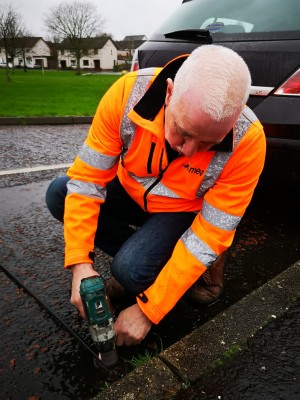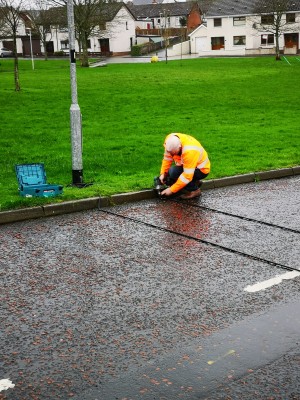The way we move around in our daily lives varies from person to person; but as infrastructure is constantly developing and the need to be aware of movement patterns to enable planners to proceed with the most appropriate measures, thus allowing free flow of traffic and to reduce the impact on the environment and the communities.
MEA has provided over 15 years of traffic surveying services for numerous clients across the private and public sector. Projects have included small scale local development schemes, traffic improvement and major national road schemes across the UK and Ireland.
All work is carried out to the appropriate standards by fully trained enumerators, supervised by experienced chartered highway professionals.
Manual Classified Counts
MCCs are designed to look at traffic movement over a specified time, for example two hour period in the morning and two hours in the afternoon over the course of 2 or three days. This type of survey could be beneficial for specific requirements, for example during the two hour window how many vehicles had more than one occupant, or vehicle types, cars, buses, goods vehicles; this quantified data would not be gathered via ATCs but can give a more in depth picture of the traffic at a specific point in time.
Automatic Tube Counters
ATCs are designed to monitor traffic 24hrs a day over a certain period of time – from days to months. This data can be gathered, and reports made to give the client the detailed information that best suits their needs; busiest time of day; exact number of vehicles passing through, vehicle types (determined by weight) and even speeds. ATC are an effective way to gather vast amounts of data at a particular location over a longer period.
Radar Counters
Radar counting is a full comprehensive survey which can collate data from not only traffic but pedestrian and cyclist movements. One of the advantages of Radar Counting is that it is discreet and almost invisible to road users.
Pedestrian Surveys
Pedestrian Surveys give the opportunity to collect data on movements of persons in a particular junction or area at a given time. This data can be beneficial to analyse the potential need for crossings or other pedestrian infrastructure needs.
Footfall
Footfall surveys determine the number of people entering/exiting the survey location. This can give planners information on pedestrian patterns within an area to strategize for future development.
Car Parking Surveys
Car Park Surveys can help determine if the site has adequate parking facilities for the demand to help planners assess whether or not the provision is sufficient, for example is there demand for more disabled spaces, parent & child spaces, electric car power points etc. Surveys can cover both on-street or off-street parking and help identify trends in use of facilities.
Bluetooth Monitoring
Bluetooth Monitoring is not complicated – almost every mobile phone, hands-free kit, PDA and laptop, and many Sat Nav and other devices, have a unique address that is able to be detected by a Bluetooth recording device. Bluetooth addresses are detected at the points of interest and then matched between sites to provide origin and destination data, and journey time data.
Multiple devices detected concurrently are treated as one. This is essential to eliminate any potential bias from say a person or vehicle with several devices. The technology is not invasive and anonymous to individuals. It’s a system developed to understand how people move around, but without knowing who they are.

